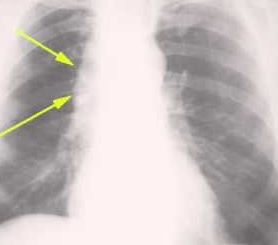What is pneumatic dilatation? - Procedure, Complications, CPT code
Pneumatic dilation, also known as PD, is widely regarded as the most effective nonsurgical treatment option for achalasia. The procedure's principle is to weaken the lower esophageal sphincter by shredding its muscle fibers with radial force. An endoscope-guided procedure is carried out without the use of a fluoroscope. When treating esophageal achalasia using endoscope-guided PD, clinicians typically utilize a Rigiflex dilator or similar low-compliance balloon. It offers the advantage of detecting mucosal injury during the dilation process, eliminating the need for a second endoscopy to check mucosal tearing. Previous research has demonstrated that endoscope-guided PD is an effective, safe, nonsurgical therapy with outcomes that are comparable to those of other treatment modalities. Despite promising results, long-term follow-up is required.
What is pneumatic dilatation?
Pneumatic dilatation is a medical intervention that is employed to dilate (stretch or expand) a constriction or stricture of the esophagus. This can be accomplished by expanding the diameter of the esophagus. This procedure includes introducing a balloon in the shape of a cylinder into the lower esophageal sphincter to disrupt the muscular fibers in that region. The balloon is inflated using a hand-held manometer, and occasionally, a waist is placed in the middle of the balloon near the gastroesophageal junction. Pneumatic dilation is regarded as the first-line nonsurgical treatment for achalasia since its efficacy is equivalent to that of surgery.

Procedure
In most cases, the following stages are required to carry out the pneumatic dilatation procedure:
Preparation: A mild sedative is administered to the patient to enable him/her to relax, and an anesthetic spray is used to numb the throat to alleviate discomfort.
Insertion of the dilator: A small, flexible balloon known as a dilator is inserted into the narrowed portion of the esophagus through the mouth.
Balloon inflation: After the balloon has been positioned, the air is pumped into it, putting pressure on the esophageal wall and causing it to stretch. The esophagus is lengthened by inflating a balloon to a certain size and leaving it in place for a short period.
Deflating the balloon: After that, the dilator is taken out and the balloon is deflated. To assist in clearing any leftover air from the esophagus, the patient might need to drink water or other liquids.
Monitoring: Following the surgery, the patient is followed for a brief period to ensure there are no issues or adverse reactions.
Most of the time, the procedure only takes a few minutes, and the patient can go to home the same day. However, individuals can feel some pain or stiffness in their throat for a couple of days following the treatment, and they are required to stick to a liquid or soft diet for a short while.
Complications
The risks associated with pneumatic dilatation include the possibility of bleeding, puncturing or perforating the lining of the esophagus, and experiencing fever, angina, hematemesis, and chest pain. The biggest problem is perforation, which may require a need surgical treatment. A previous pneumatic dilatation and employing an inflated pressure higher than indicated enhance the chance of developing a problem. There is a correlation between the speed with which the balloon is inflated and the number of complications that occur; typically, slower inflation rates are associated with a lower incidence of difficulties.
Pneumatic Dilatation CPT Code
Pneumatic dilatation is denoted by a CPT code of 43249. It is an endoscopic treatment used to treat achalasia by disrupting the muscular fibers of the lower esophageal sphincter
 Reviewed by Simon Albert
on
February 12, 2023
Rating:
Reviewed by Simon Albert
on
February 12, 2023
Rating:











